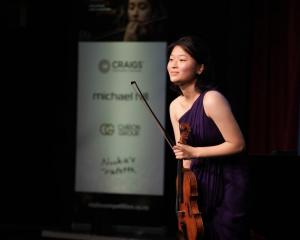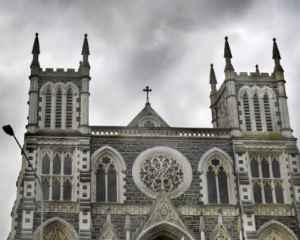
Dunedin Symphony Orchestra and Li-Wei Qin
Dunedin Town Hall
Saturday, August 12
REVIEWED BY MARIAN POOLE
A near capacity crowd at the Dunedin Town Hall on Saturday stamped and cheered and whistled their appreciation of guest soloist Li-Wei Qin’s rendition of Dvorak’s Cello Concerto with the Dunedin Symphony Orchestra under Simon Over.

The work is deservedly acclaimed one of the genre’s highlights. Qin’s performance on his very beautiful sounding 1780s cello was indeed superb. Melodic lines sang from the strings; Qin’s duet sections with Concertmaster Tessa Petersen were elegantly phrased to exquisite effect; the emotional intensity of the work was maintained throughout.
Qin gave an encore Chonguri by 20th-century Georgian composer Sulkhan Tsintsadze. The work honours the Georgian round-bellied, long-necked stringed folk instrument. Making good use of the cello’s resonance. Chonguri is intriguingly rhythmic, percussive lyric and fun.
Dunedin Symphony Orchestra celebrated American composer John Adams’ 70th birthday with a performance of The Chairman Dances (Foxtrot for Orchestra) from Adams’ opera Nixon in Paris (1978).
The work is an exciting if rather ominous sounding amalgam of minimalistic but densely layered ostinato rhythms, highlighting brass, winds and timpani. The result is a finely honed portrayal of potential risk - a foxtrot with all its implications plain to hear.
The Dunedin Symphony Orchestra’s performance of this challenging work was a resounding success and, by the ecstatic looks on their faces, another notch in their collective belt.
Brahms’ Symphony No 4 in E minor is a long work but, unfortunately, not monumental. He takes the Beethovenian notion of making something large out of nothing more than two notes and a rhythm, but the first two movements (Allegro non troppo and Andante moderato) fail to make anything out of loosely connected serial episodes.
The final two movements (Allegro giocoso and Allegro energico) were well performed and, being forceful and cohesively written, save the work from obscurity.











